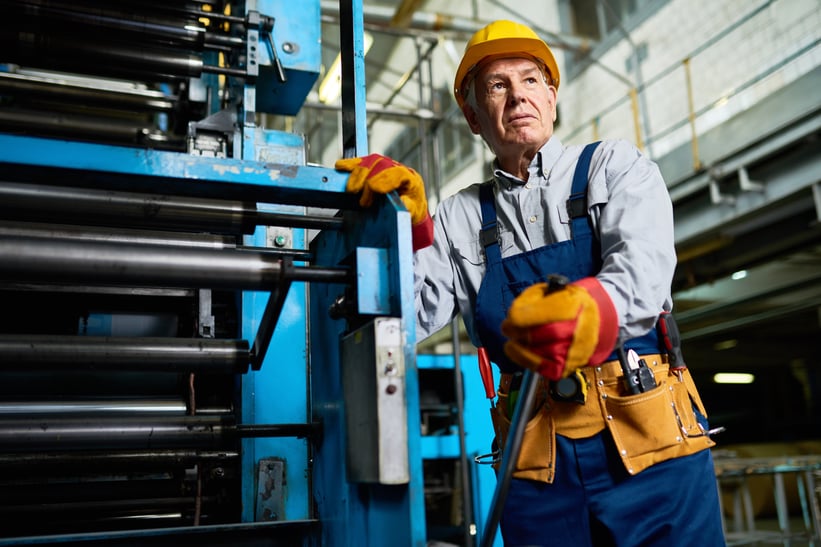During the first waves of the pandemic, organizations did what they could to get through the initial disruption and keep operations going. Now that things have stabilized, business leaders are looking to make changes that strengthen their supply chain, improve customer satisfaction and have a positive impact on their bottom line.
While offshoring was once seen as a key factor in staying competitive, the rising risks have businesses of all sizes thinking about moving their operations back to the United States.

The Benefits of Reshoring
Rising Costs
As countries outside the U.S. continue to develop, prices are rising, making offshoring less appealing for many. In addition to taxes, labor costs, wages and shipping costs, trade tariffs and trade wars have also contributed to rising costs. Between Asia and North America, Bloomberg reports that “contract rates…are coming in around $2,500 to $3,000 for a 40-foot container—25% to 50% higher than a year ago.”
Supply Chain Disruption
One of the biggest factors driving reshoring is supply chain issues. Small businesses have been crippled by shipping delays, leaving customers waiting longer for stock to arrive, with some products out of stock for months. All this leads to the loss of revenue through cancelled orders and customers who ‘jump ship’ to suppliers that can actually deliver.
Supply chain disruption is not unique to the pandemic. Natural disasters —like Iceland’s volcanic eruption in 2010, or the sandstorm that resulted in the blocking of the Suez Canal in 202 1—can also cause havoc on global supply chains.
Thanks to same day delivery providers like Amazon, customers now expect products to be delivered to them within hours. As a result, post-pandemic American businesses should be looking at every way possible to shorten or strengthen their supply chains.
Intellectual Property Concerns
One of the biggest factors driving reshoring is supply chain issues. Small businesses have been crippled by shipping delays, leaving customers waiting longer for stock to arrive, with some products out of stock for months. All this leads to the loss of revenue through cancelled orders and customers who ‘jump ship’ to suppliers that can actually deliver.
Supply chain disruption is not unique to the pandemic. Natural disasters —like Iceland’s volcanic eruption in 2010, or the sandstorm that resulted in the blocking of the Suez Canal in 202 1—can also cause havoc on global supply chains.
Thanks to same day delivery providers like Amazon, customers now expect products to be delivered to them within hours. As a result, post-pandemic American businesses should be looking at every way possible to shorten or strengthen their supply chains.
Made in the USA Ethos
There’s good reason to take pride in supplying products made in the USA. Consumers are increasingly looking for high-quality, sustainably and ethically made products. One study even found that auction transaction prices on eBay were 28% higher when they featured the ‘Made in USA’ claim.
Buying American-made tells consumers they are supporting higher-wages and safer production practices as US manufacturers hold higher standards in the safety, education, and employee benefits than many popular offshoring countries—not to mention the added benefits of supporting jobs in American factories.
Made in the USA is also a greener option, as reshoring means products travel shorter distances, thus requiring less fuel.
Quality Concerns
According to the Reshoring Initiative’s 2017 Data Report, quality is the most frequently cited reason for reshoring manufacturing to the United States. Quality is something businesses want to get right the first time, especially since 80% of consumers say just one bad experience is all it takes for them to do business with a competitor.
Sub-optimal products can result in negative customer reviews, while recalled products steal time and money from your profitability and productivity. Defective shipments of goods take time to inspect and can eat away at any profits promised by offshoring in the first place.
Communication Barriers
One of the biggest advantages from onshoring is having a closer relationship with the partners in your supply chain. Language and cultural barriers are also less prevalent.
For organizations that rely on clear and consistent communication with their suppliers, reshoring can eliminate problems with miscommunications and major time zone differences.
Trends in Reshoring
Reshoring isn’t a new trend. As mentioned, natural disasters like Iceland’s volcanic eruption caused global supply chains to come to a halt in the 2010s, while rising wage costs in China over the past decade and President Trump’s trade wars have also encouraged a shift towards reshoring.
According to the Reshoring Initiative’s 2021 Report, reshoring is poised to surge 38% to a record high. But who are all these companies bringing their supply chain operations back home?
Brands Reshoring
The Reshoring Initiative has over 400 case studies of businesses that have reshored their supply chain back to the United States, showing that reshoring is no longer a ‘trend’ but a smart business move.
Trellis Earth, manufacturers of plant-based, sustainable products moved their operation from China to Rochester, NY citing: “government incentives, a lower cost of business, proximity to customer demand, lead time, time to market, abundant and affordable natural resources and the availability of skilled workers” as reasons.
Toyota moved part of their production operations from Japan to Georgetown Kentucky in 2015 creating thousands of new jobs. Tax incentives and a stabilized exchange rate made the move more profitable than offshoring.
In addition, notable brands such as AT&T, ABB, BMW, Apple, GE, Ford, Delta, and Shell, have also moved specific products, or portions of their supply chain over to the United States.
Meet IDEAZ
At IDEAZ, our 20 plus years of remote R&D expertise enables us to design, engineer and deliver products much faster for our clients—wherever they are. We’re a dedicated team of technical designers and creative engineers blending a depth of knowledge and unbridled creativity. The result? A proven process—from ideation to manufacturing—that results in innovative, highly functional and impactful products that drive revenue for our clients.

